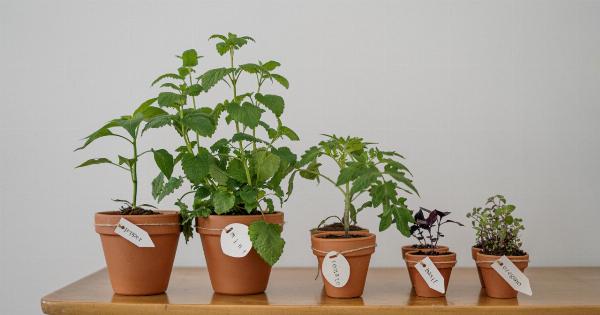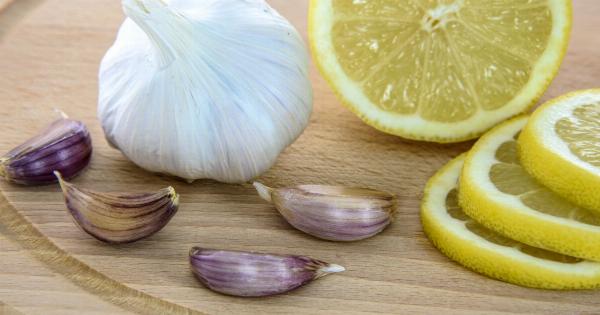Antibiotics have long been hailed as the panacea for many bacterial infections, but the rise of superbugs is challenging the efficacy of these drugs.
Superbugs are bacteria that have developed resistance to multiple antibiotics, rendering conventional treatments ineffective. As a result, scientists and researchers are now exploring alternative solutions to combat these resilient microorganisms. Interestingly, one of these alternatives comes from an unexpected source: broccoli.
The Problem with Antibiotics
Antibiotics have revolutionized modern medicine, saving countless lives since their discovery. They work by either killing bacteria directly or inhibiting their growth.
However, their overuse and misuse have led to the emergence of antibiotic-resistant bacteria. The World Health Organization has warned that antibiotic resistance is one of the greatest threats to global health and estimates that by 2050, it could cause up to 10 million deaths annually.
The Rise of Superbugs
Superbugs, such as methicillin-resistant Staphylococcus aureus (MRSA) and vancomycin-resistant Enterococcus (VRE), are bacteria that have developed mechanisms to resist the effects of antibiotics.
This resistance can occur through various mechanisms, including the acquisition of resistance genes, mutation of existing genes, and the ability to form biofilms that protect them from antimicrobial agents.
Superbugs are particularly concerning because they can cause severe infections that are difficult to treat.
Infections from superbugs are commonly contracted in healthcare settings, where they spread easily due to the close proximity of patients and the frequent use of antibiotics. Additionally, certain individuals, such as those with compromised immune systems or chronic health conditions, are more susceptible to these infections.
The Broccoli Connection
Researchers have found that certain compounds present in broccoli and other cruciferous vegetables possess antimicrobial properties.
One such compound is sulforaphane, a natural compound that has been shown to have antibacterial effects against a range of bacteria, including MRSA and VRE.
Sulforaphane acts by disrupting bacterial cell membranes and inhibiting the growth of bacteria. It also appears to enhance the efficacy of conventional antibiotics, making them more effective against drug-resistant bacteria.
This is particularly significant because it suggests that a combination of sulforaphane and antibiotics could provide a powerful strategy against superbugs.
Studies Supporting the Broccoli-Antibiotic Combination
A study conducted by researchers at the Johns Hopkins University School of Medicine showed that combining sulforaphane with conventional antibiotics significantly reduced bacterial burden in infected tissues.
The researchers found that the combination not only enhanced the effectiveness of antibiotics but also reduced the development of antibiotic resistance in the bacteria.
Another study conducted at the University of Melbourne demonstrated similar results.
The researchers exposed MRSA to a combination of sulforaphane and various antibiotics and found a substantial reduction in bacterial growth compared to using antibiotics alone.
Broccoli: A Natural Defense
Broccoli’s antimicrobial properties extend beyond sulforaphane. The vegetable contains other compounds, such as indole glucosinolates, that have also been shown to have antibacterial activity.
These compounds work by interfering with bacterial quorum sensing, a communication system that bacteria use to coordinate their behavior. By disrupting this communication, the compounds hinder the bacteria’s ability to form biofilms, making them more susceptible to antibiotic treatment.
Benefits of Antibiotic Alternatives
The use of antibiotic alternatives, such as sulforaphane from broccoli, offers several benefits in the fight against superbugs:.
- Reduced antibiotic resistance: Antibiotic alternatives can help reduce the development of antibiotic resistance, as they target bacteria through different mechanisms. By using alternative treatments in combination with antibiotics, the risk of bacteria developing resistance is minimized.
- Enhanced efficacy of antibiotics: The combination of antibiotic alternatives and conventional antibiotics can enhance the effectiveness of antibiotics against drug-resistant bacteria. This increased efficacy is crucial in the battle against superbugs.
- Natural and accessible: Antibiotic alternatives are often derived from natural sources, making them attractive options for those seeking alternative treatments. Furthermore, many of these sources, like broccoli, are widely available and affordable.
- Potential for new treatments: Exploring antibiotic alternatives may lead to the discovery of new drugs or therapeutic approaches for combating bacterial infections. By investing in research and development in this area, we can expand our arsenal against superbugs.
The Future of Antibiotic Alternatives
The research on antibiotic alternatives, particularly broccoli-derived compounds, is still in its early stages.
While the preliminary results are promising, more extensive studies are needed to determine the optimal dosing, potential side effects, and long-term effects of these alternatives.
However, the potential of broccoli and other natural compounds as antibiotic alternatives is exciting.
By harnessing the power of these natural defenses, we have the opportunity to develop new strategies for combating superbugs and preserving the effectiveness of antibiotics.
Taking a Broccoli-Forward Approach
In conclusion, the rise of superbugs poses a significant challenge to modern medicine. Antibiotic resistance threatens to undermine the effectiveness of these life-saving drugs.
However, scientists are now exploring alternative methods to combat bacterial infections. One promising avenue is the use of broccoli and its compounds, such as sulforaphane, which have shown antibacterial properties and the ability to enhance the efficacy of antibiotics.
By investing in further research and development in this field, we can potentially unlock new treatments and strategies to combat superbugs and preserve the potency of antibiotics for future generations.






























